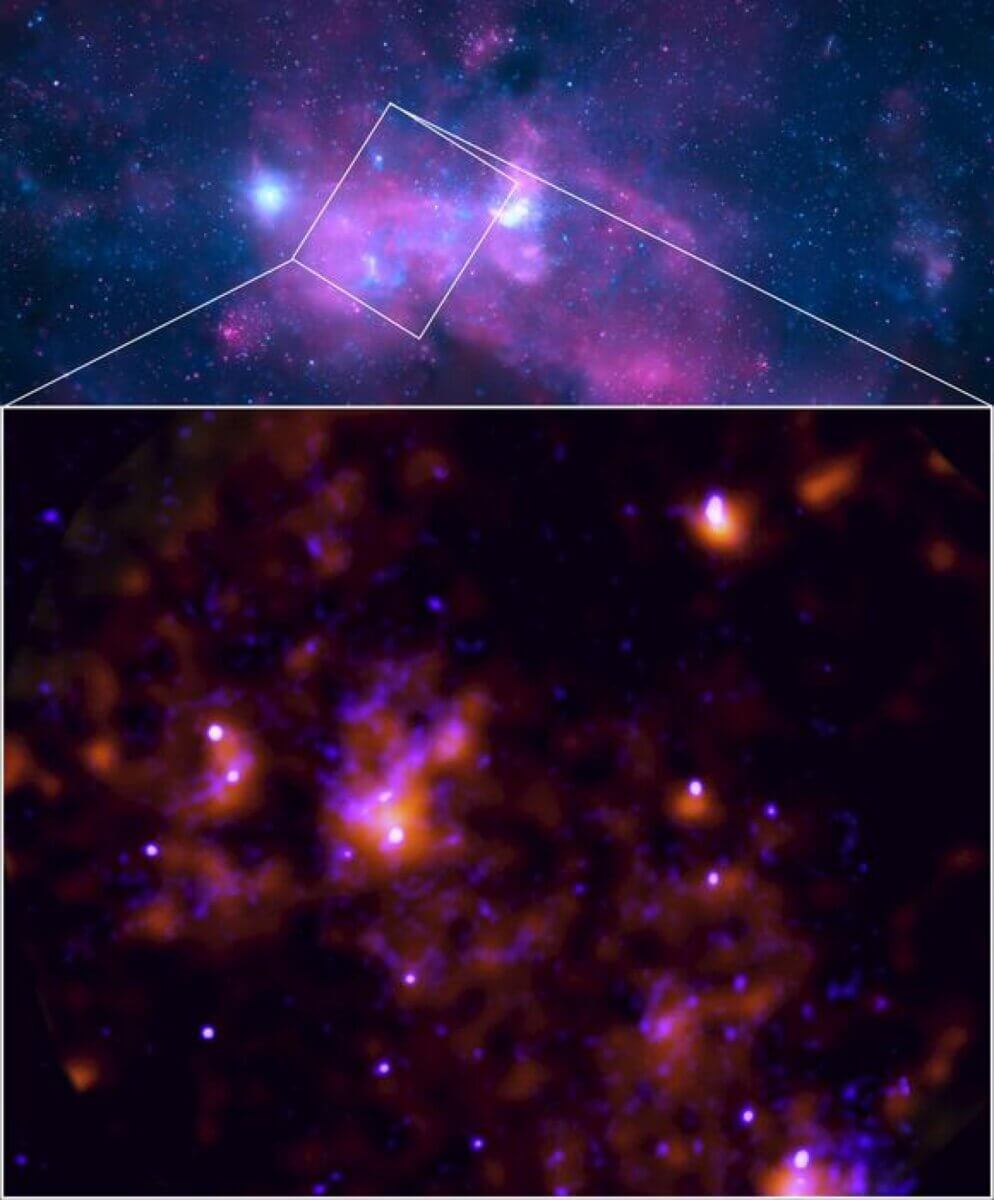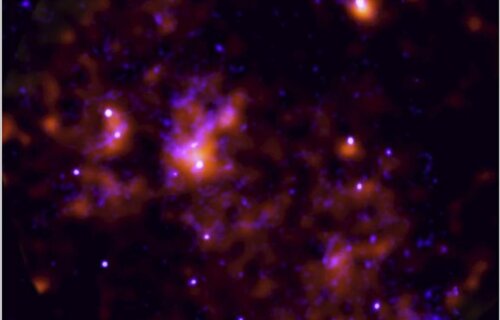PARIS, France — Scientists have detected a mysterious “echo” originating from the supermassive black hole at the center of the Milky Way. A team in France estimates that this eerie sound was made approximately 200 years ago, when the black hole stirred from a state of dormancy.
According to researchers with the National Center for Scientific Research (CNRS), this acoustic phenomenon signifies an intense period of activity in which our galaxy’s black hole consumed vast amounts of gas and dust. Particles were drawn towards the black hole’s event horizon, a point of no return from which even light cannot escape. As the massive black hole ingested this material, brilliant X-ray light bursts occurred, producing echoes that can be translated into sound waves here on Earth.
Dr. Frederic Marin, the corresponding author from Strasbourg University, explains that this discovery provides evidence of a past awakening of this gigantic entity – an object four million times more massive than the Sun. It sheds new light on the enigmatic and dynamic environment of supermassive black holes, which are incredibly dense regions at the centers of galaxies. These black holes exert a powerful gravitational pull, drawing in any surrounding gas and dust.
Sagittarius A* (Sgr A*), the supermassive black hole at the center of our own galaxy, is only 26,000 light-years away. Dr. Marin explains that their research reveals the missing evidence that X-rays from giant molecular clouds originate from the reflection of an intense but short-lived flare produced at or near Sgr A*. This discovery helps us understand the historical activity of our galaxy’s center.
Scroll down to hear what our galaxy’s black hole sounds like

One of the few black holes where matter flow can be observed, Sgr A* is challenging to study due to its absorption of all surrounding light. Scientists have spent decades looking for signs of black hole activity. To illustrate the black hole’s emergence from its dormant state, Dr. Marin likens it to a single glow-worm in a forest suddenly becoming as bright as the Sun.
The research also offers an explanation for the unusually bright galactic molecular clouds near Sgr A*, which are reflecting the X-rays emitted by the black hole two centuries ago. The international team integrated data from the IXPE (Imaging X-ray Polarimetry Explorer) space telescope and the Chandra X-ray Observatory to conduct their study.
Their findings suggest that the primary source of the emission is Sgr A*, as the polarization angle is consistent with this. The degree of polarization indicates that about 200 years ago, the X-ray luminosity of Sgr A* momentarily matched that of a Seyfert galaxy – a type of galaxy with an extremely active center producing strong radiation bursts.
Just as a compass points to its source, the polarized X-ray light emanates directly from Sgr A*. The scientists are now focusing on determining the physical mechanisms that enable a black hole to transition from a quiescent to an active state.
Black holes are formed when a dying star collapses under its own gravitational force, leading to a supernova, an extraordinarily powerful stellar explosion. These astronomical entities have such immense gravitational pull that even light cannot escape, rendering them invisible. Supermassive black holes, which can be billions of times larger than the Sun, are believed to be present at the center of all large galaxies.
Listen to the black hole’s echo from 200 years ago here

The study is published in the journal Nature.
You might also be interested in:
- Mysterious, Morse code-like ‘structures’ at center of Milky Way ‘stun’ astronomers
- Mysterious radio signals reach Earth from a galaxy 3 billion light years away
- Bending light helps reveal one of the biggest black holes ever recorded
South West News Service writer Mark Waghorn contributed to this report.

